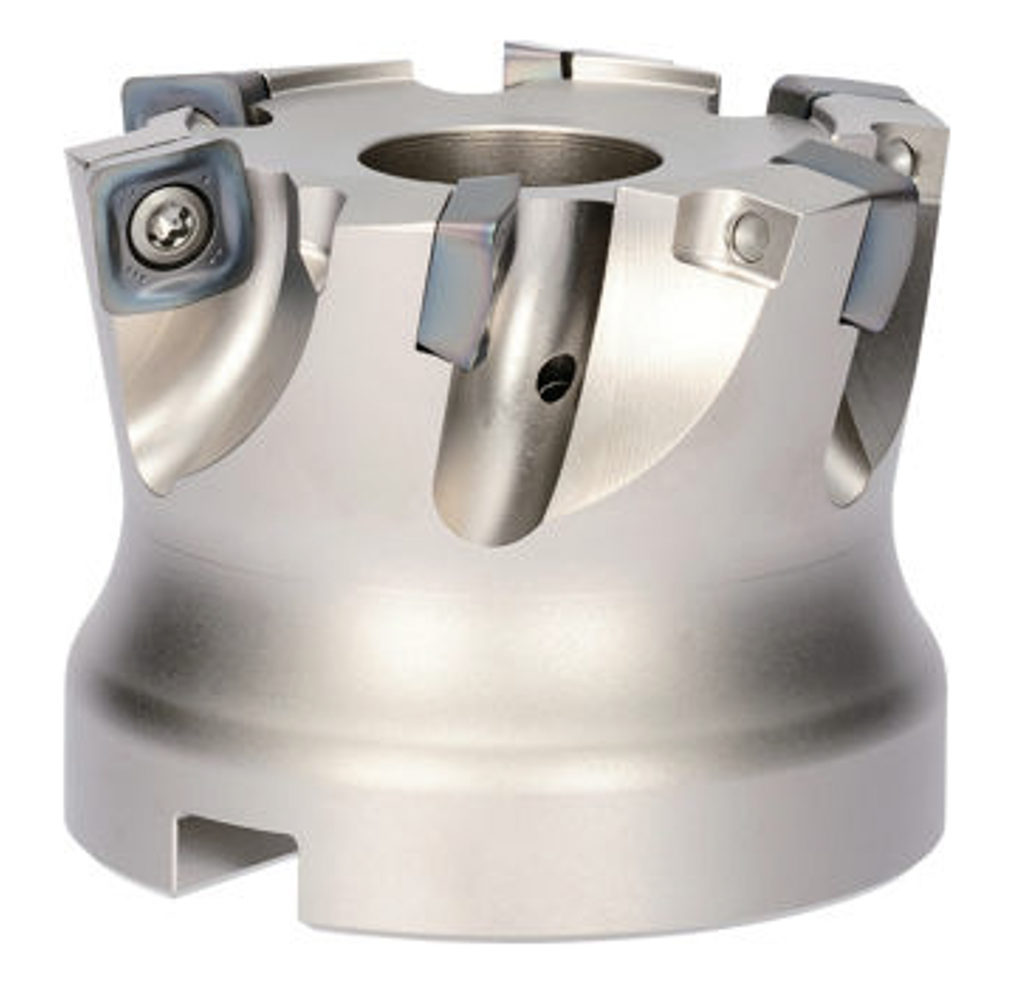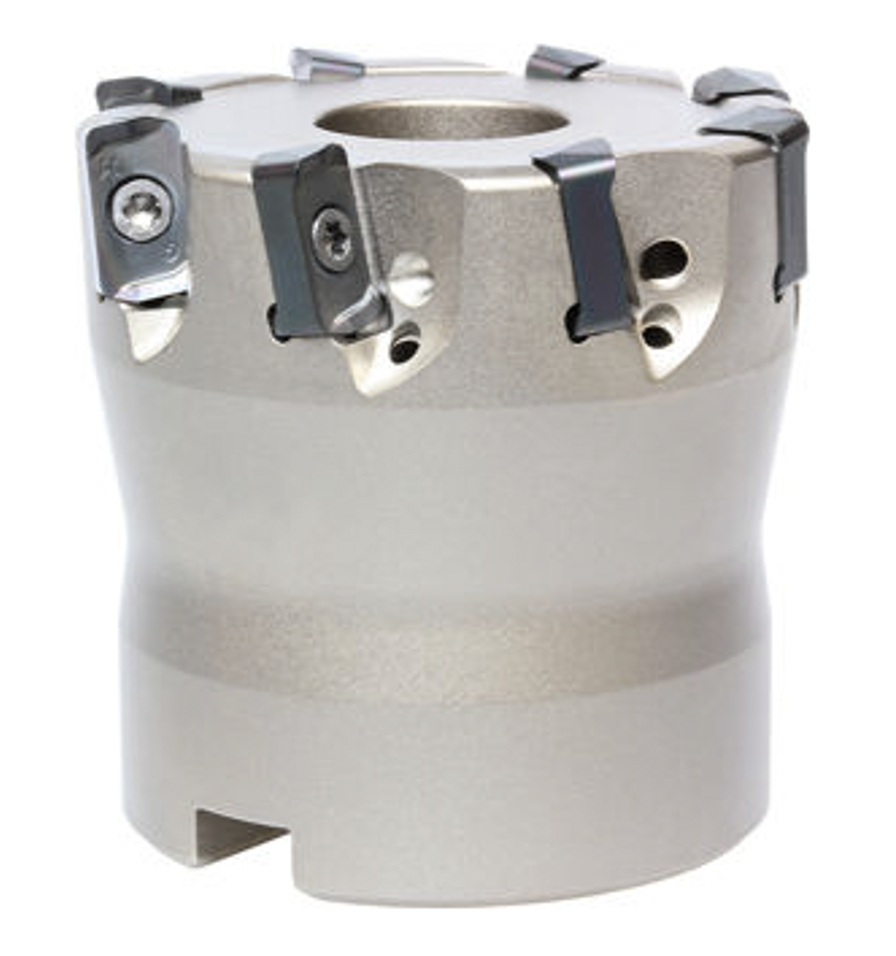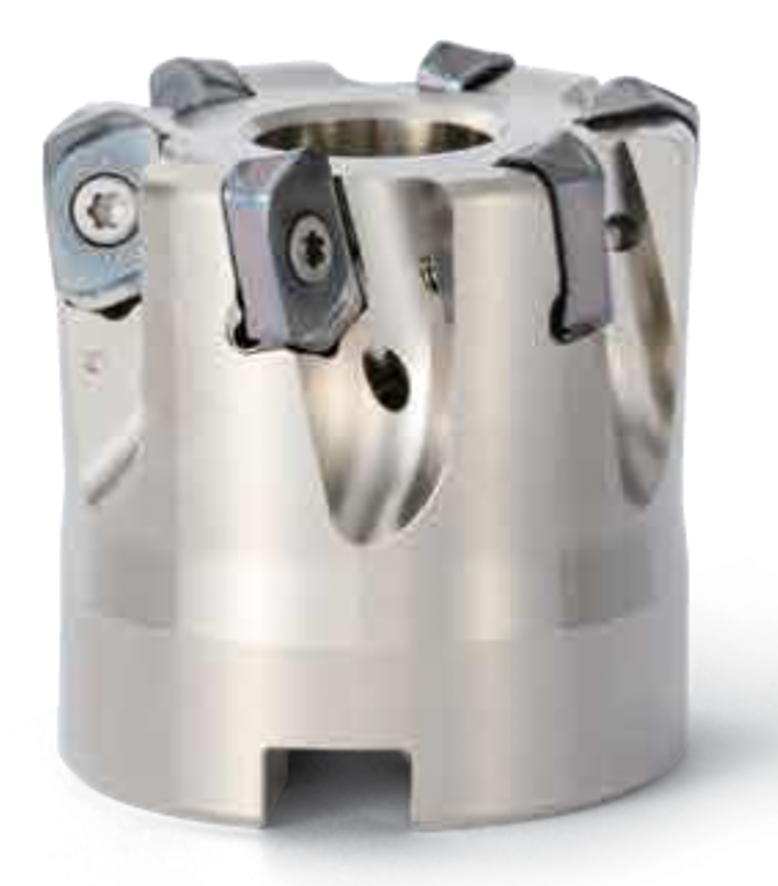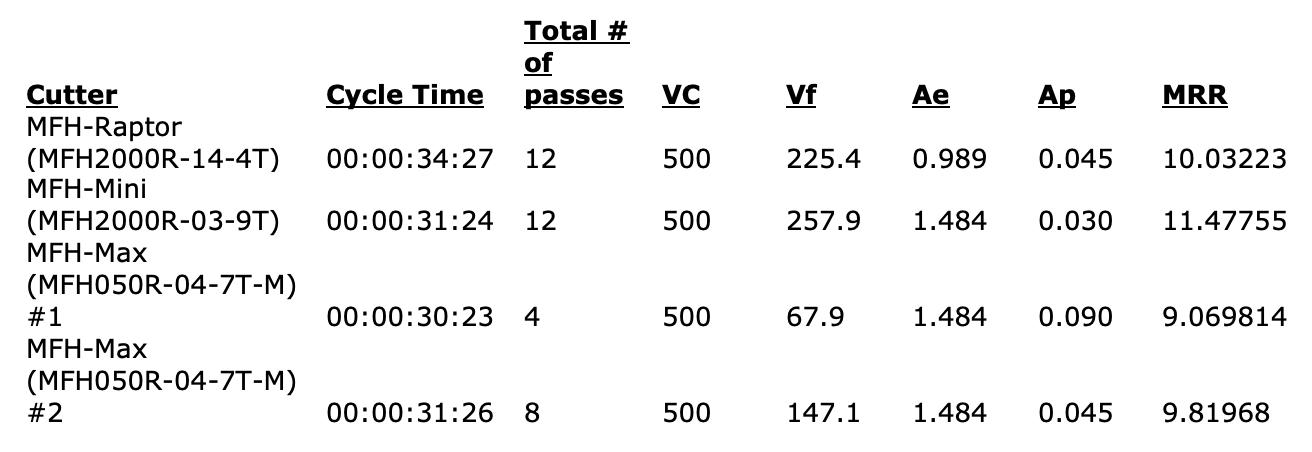Other high-feed milling advantages include:
- The production of chips that are thinner than those made by traditional 90-degree and 45-degree cutters. This results in higher metal removal rates and decreased cycle times.
- By using high-feed (10-25 degree) cutters, force is directed up toward the spindle, reducing chatter and improving tool life and the finished surface of the machined part. (KYOCERA’s MFH family of high-feed cutters also have a convex cutting edge design that helps reduce the impact as the cutter enters the workpiece, further reducing cutting force and vibration.)
- A 10-degree-angle cutting edge, which means:
- Chip thickness remains constant throughout range of depth of cut.
- No matter the depth of cut, a thinner chip thickness and lower cutting force will be realized
- A reduction in machining temperatures means a better option for heat-resistant alloy materials.
- High-feed mill cutters are multifunctional with a wide application range for multiple metalworking processes, including:
- Face milling and shouldering
- Slotting
- Ramping
- Helical milling
- Pocketing
- Contouring
A Larger Depth of Cut
A wide variety of indexable high-feed cutter designs are available in the marketplace. KYOCERA alone offers five different options, including the new MFH-Max, which offers larger depth-of-cut capabilities than conventional high-feed cutters. The MFH-Max allows for a 0.098” depth of cut, whereas conventional high-feed mills allow for a shallower 0.039” depth of cut. This feature allows for increased productivity and longer tool life.
Just like other cutters in the MFH family, the new Max produces excellent performance in a wide range of applications, including automotive parts, difficult-to-cut materials, and molds, providing multiple solutions for various machining environments.
However, the Max’s larger depth-of-cut capabilities mean the feed rate must be lower than conventional high-feed milling cutters. Does this equate to a lower metal removal rate? To find out, KYOCERA ran the MFH-Max against the MFH-Raptor and MFH-Mini in a typical machining scenario to see which would be more productive.
For the test, KYOCERA selected a typical machining scenario—decking a 4140 workpiece, 28-32 Rc, and 5” x 6” with 0.090” total to be removed—and evaluated three different high-feed cutters to see which was most productive.
The High-Feed Cutters
We used the following cutters for the test:
No. 1: 2” MFH-Raptor MFH2000R-14-4T (4 flute, SOMT14 inserts)











Talk to Us!
Leave a reply
Your email address will not be published. Required fields are marked *